Words Posy Gentles Photographs Posy Gentles, Kent Police, the Fleur de Lis Museum Collection
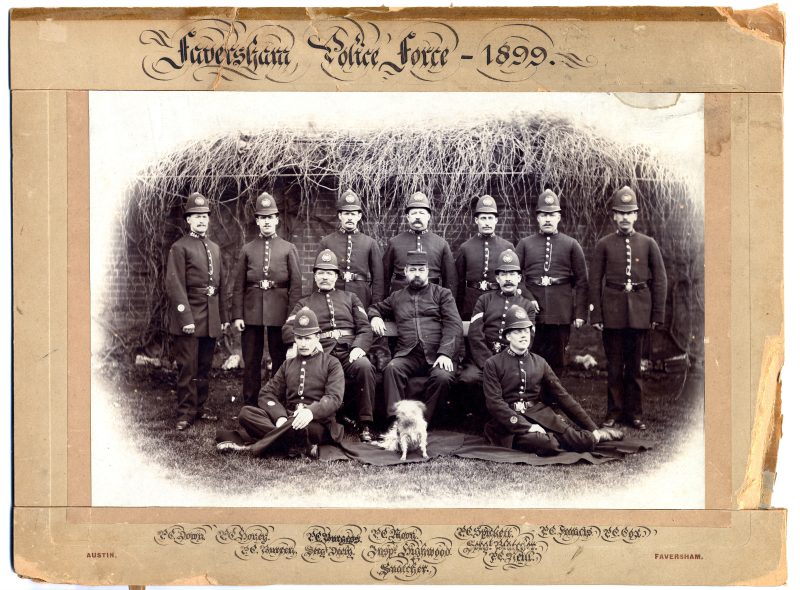
The Faversham Police Force in 1899 with their dog, Snatcher (Photo: Kent Police)
Kent Police Museum opened to the public in Faversham Police Station in Church Rd in 2021. It opens from 10 – 4 on Thursdays, Fridays and Saturdays and is free. It is unmissable.
Faversham Life met archivist Paul Upton, the curator of the museum, on a sunny Spring morning. Yet, after we passed the front desk into the museum and then the cells at the back of the station, my skin was soon crawling with the thrill of it all. Faversham Police Station is still in operation which adds significantly to the experience.
There are four cells at the back of the station which were in use as holding cells until the 1990s. Until the 1970s, their occupants would be taken over to the magistrate in the Guildhall in the marketplace to be dealt with the very next day. Paul says: ‘Now the nearest cells are in Canterbury or Medway.’
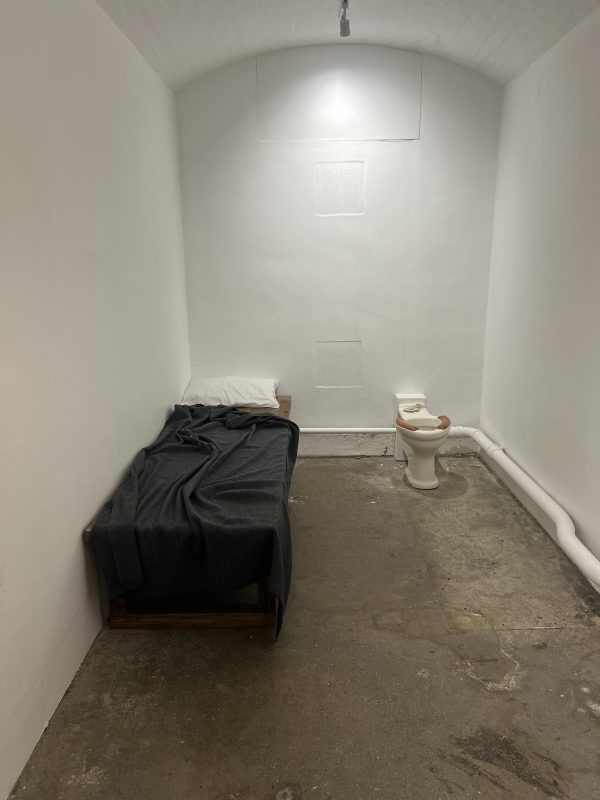
The holding cells in Faversham Police Station were in use until the 1980s
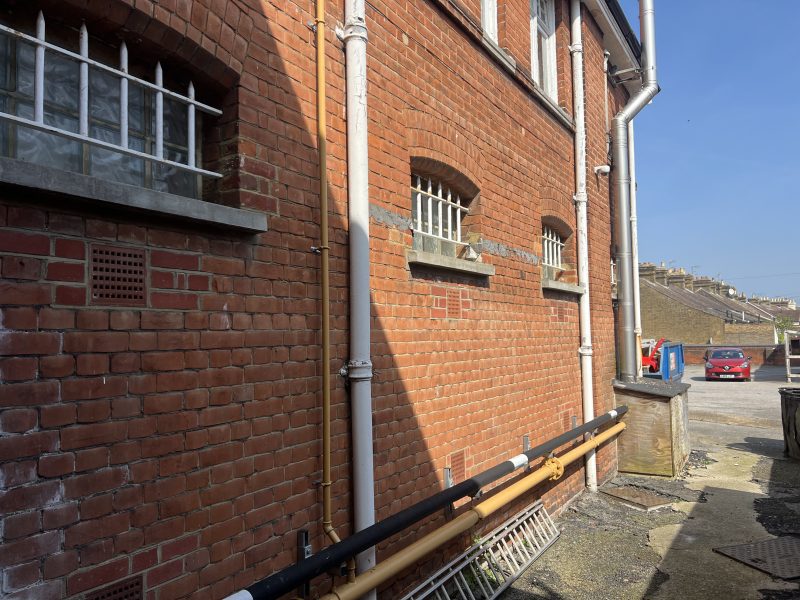
The barred cell windows
The cells have arched ceilings, high barred windows and riveted wooden doors with peepholes. There are the two of the original beds – solid wood and no mattress. Each cell also had a lidless lavatory, with the cistern and chain outside the cell to be flushed by the policeman on duty at his leisure, presumably to prevent flushing away of evidence. There is a meagre blanket and nothing else. The furthest cell – number 4 – is said to be haunted.
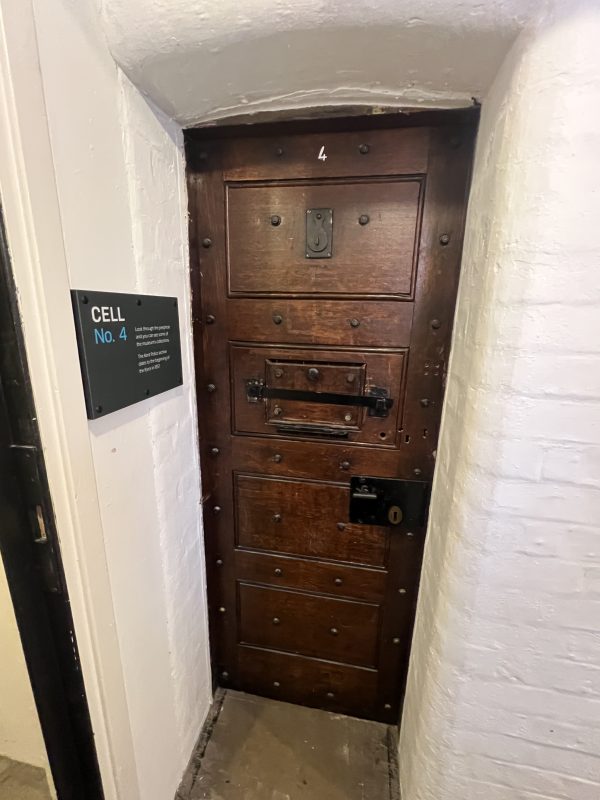
Cell 4 is said to be haunted
A sign tells us: ‘In the dead of night, the metal manhole cover outside Cell 4 inexplicably bangs as if it is being walked over, but on further investigation, there is no-one there.’ The manhole cover is beneath the sign and as you stand on it, sure enough you hear the ghostly clang. Other reports say that officers working through the night have felt a ghostly hand on their shoulder and seen figures walking into rooms and vanishing without trace.
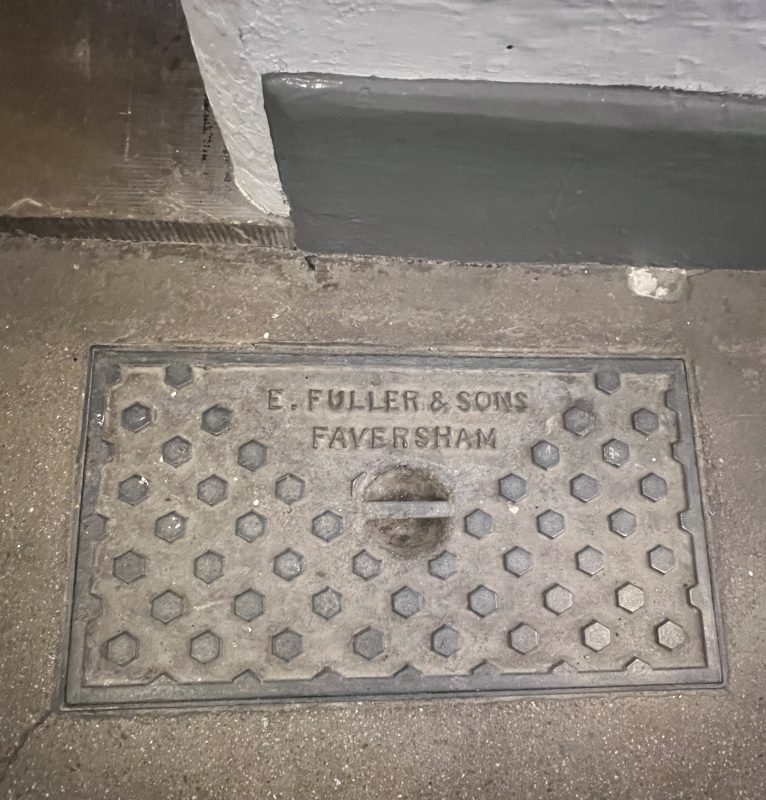
The ghostly clang of the manhole cover is said to be heard even when there is no-one there
In the Museum’s main room is the history of the policemen and women of Kent. The room is dominated by a 1981 BMW police motorbike which you can sit on if you like, and the original police light which hung outside Faversham Police Station on the still existing wrought iron arch and is unusually red rather than blue. Past the table of handcuffs, truncheons and old bike lamps which you can handle and examine, you walk into The Crime Room.
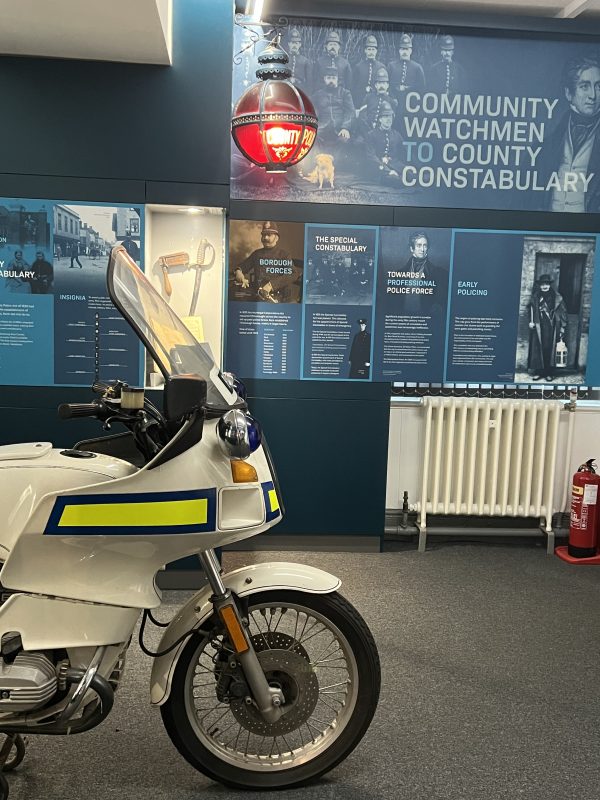
A 1981 BMW police motorbike
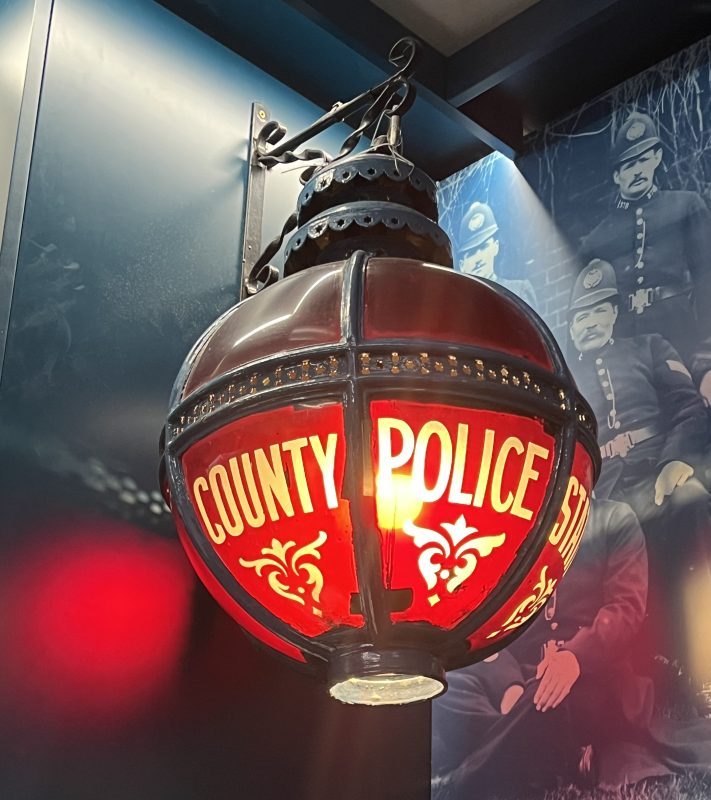
The original police lantern which hung outside Faversham Police Station. Why it was red rather than blue is a matter for conjecture
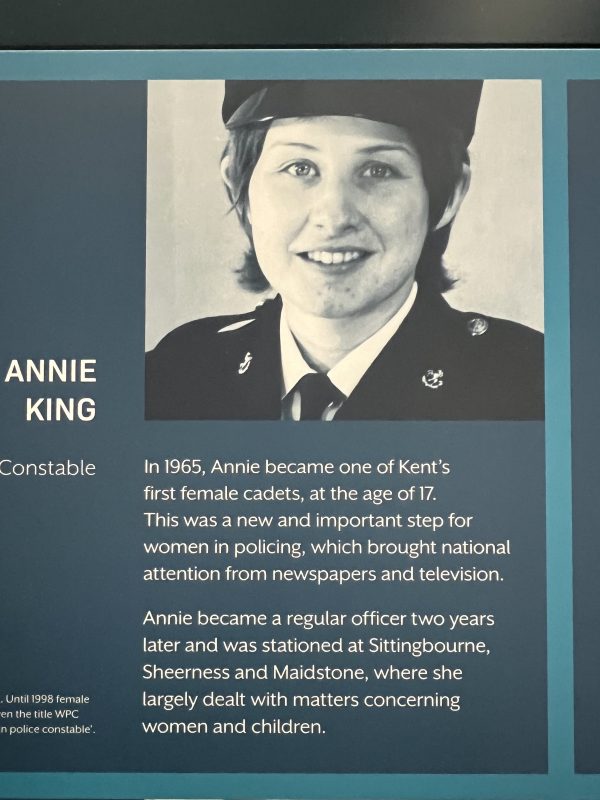
Annie at the age of 17 became one of Kent’s first women cadets
Out of the vast offsite Kent Police archive, Paul Upton has had to decide which crime artefacts to show. ‘When I set up the museum, I was very conscious of the victims of crime.’ One visitor to the museum was a relation of Alan Poole who stole the very Sten machine gun displayed in The Crime Room from Fort Luton in Chatham and fatally wounded PC Alan Baxter in the notorious Symons Avenue Siege in 1951. She was fascinated to see the actual gun, and spoke of the shame her family had always felt because of the incident.
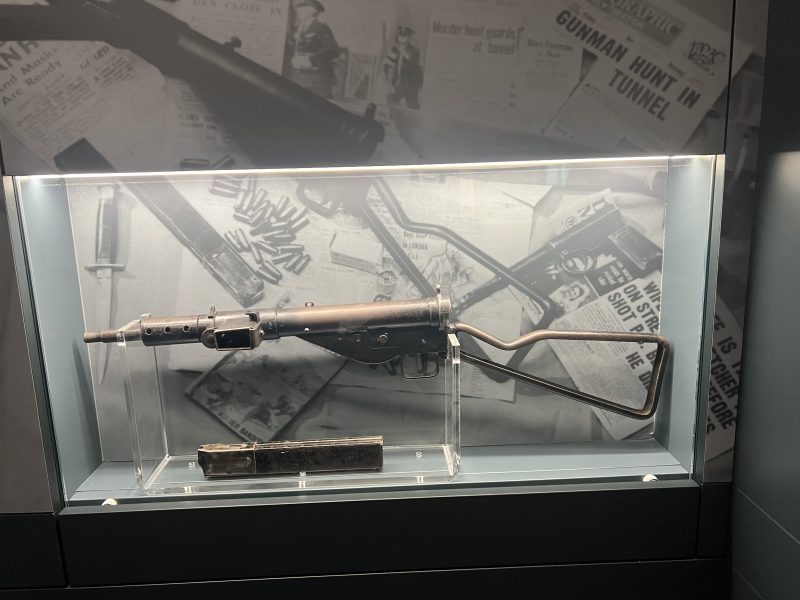
The actual stolen Sten Gun of the notorious Symons Street Siege in 1951
The museum started as a training museum, not for public display, at Police Headquarters in Sutton Rd in Maidstone, similar to the Black Museum of Scotland Yard which, Paul tells me, has such gruesome artefacts as a tobacco tin of pubic hair belonging to the murderer Christie of 10 Rillington Place, and a large cooking pan belonging to Dennis Nilsen. Paul says: ‘It’s amazing how everyday objects can be infused with darkness.’ In The Crime Room, we see a showcase of vicious weapons collected over the years including an adapted bicycle chain and an unadapted lavatory chain.
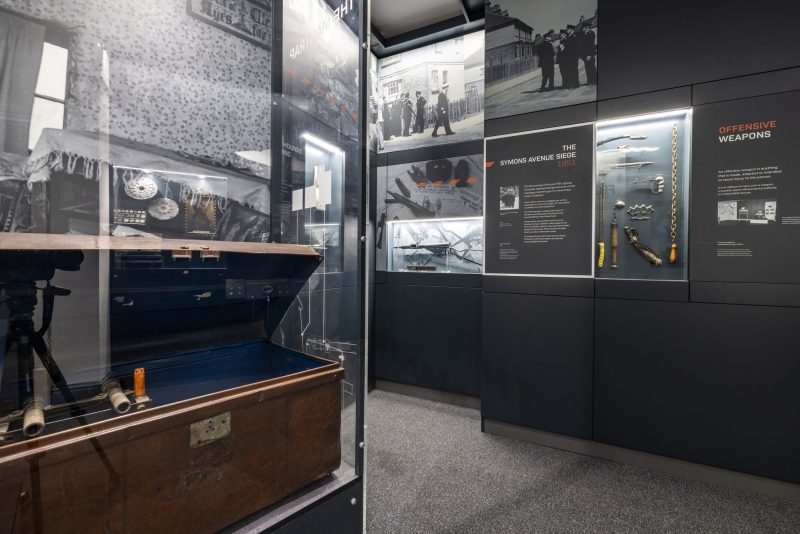
The deathly spring gun mantrap which claimed the life of Noah Eastwood
There is also the original ingenious, if horrifying, mantrap, created by Sidney Taylor in 1952. After being burgled twice, he made a spring gun in the tin trunk where he kept his valuables, which was set off by the next unfortunate burglar Noah Eastwood, who later died of his injuries.
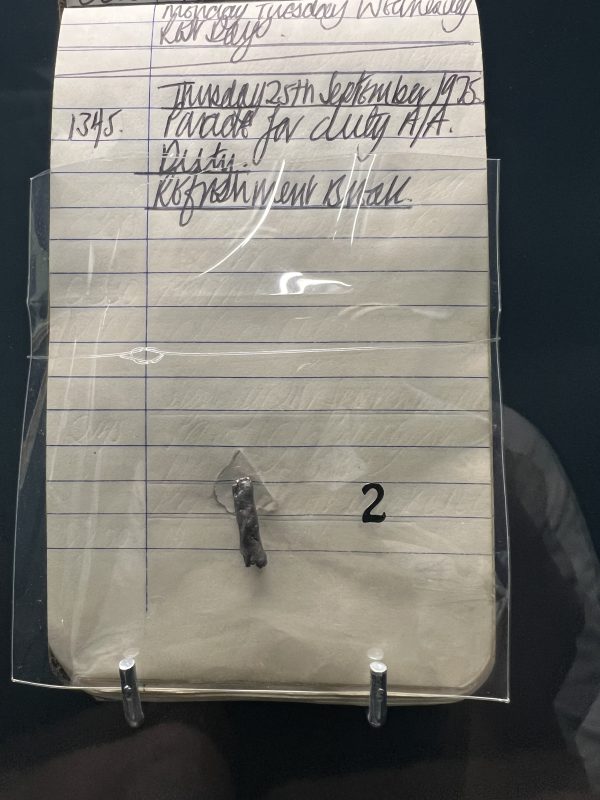
A policeman’s notebook saved his life in the bombing of The Hare and Hounds pub in Maidstone in 1975. This is the piece of shrapnel which, but for the notebook, would have entered his chest
The Museum started as a haphazard collection of artefacts and came to Faversham Police Station after a stint in Chatham Dockyard. Paul created this museum from scratch. He says: ‘Many of the artefacts are very powerful. I wanted to make a museum to provoke thought and give a different slant to what we think we know. This museum is set up to be self-guided. It isn’t telling people what to think.’
Faversham Police Station was its ideal home. The land was given by the Cooksditch estate for a purpose-built police station, which opened in 1904, with a covenant that it always had to be used for police purposes. At this point, it comprised the station and cells and two houses – one belonging to the superintendent and one to the caretaker. On the painted porch, closest to Cooksditch, the number two can still be seen. Police accommodation in the same style was also built, and is now part of Cooksditch Nursing Home.
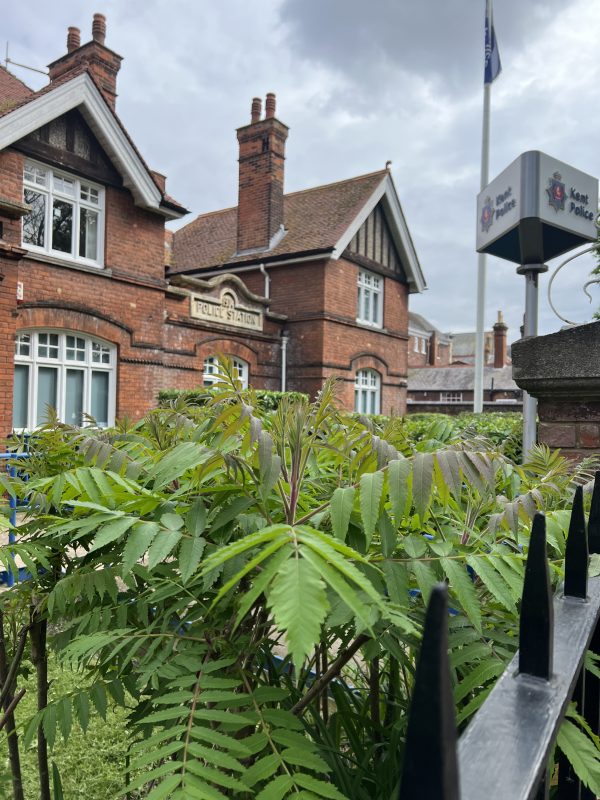
Faversham Police Station today

…and in 1906 (Photo: Fleur de Lis Museum Collection)
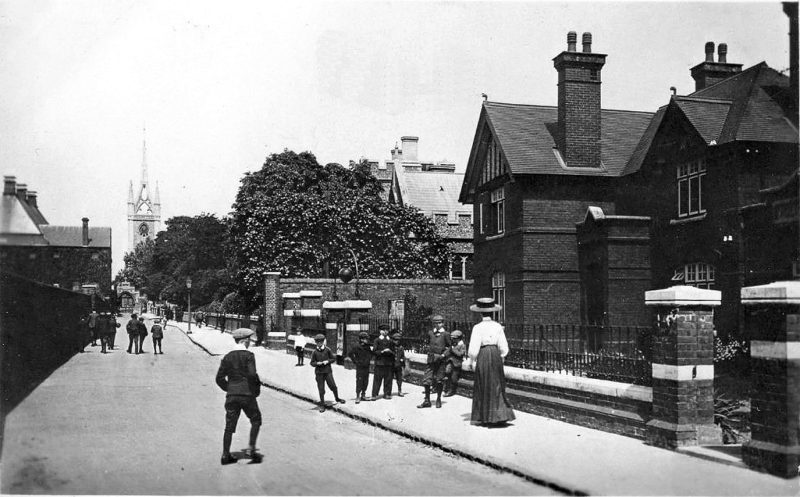
The new Church Rd police station
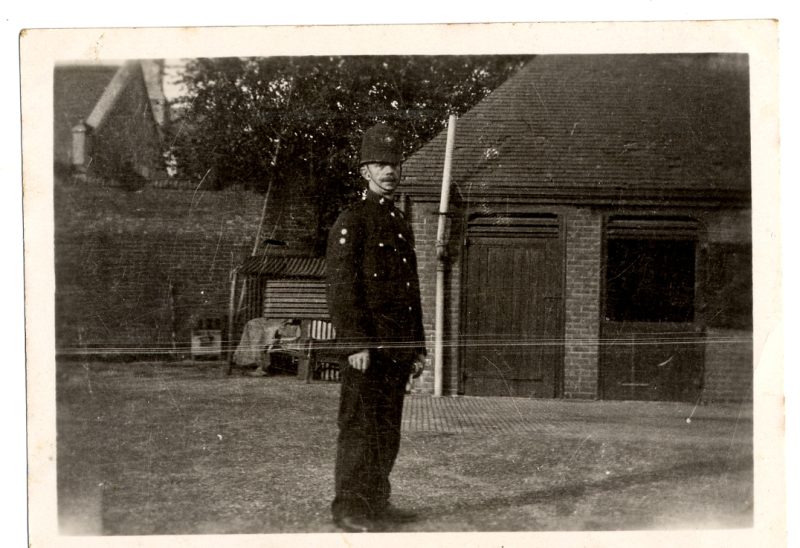
Sergeant Jenner in Faversham Police Station yard in 1927 (Photo: Kent Police)
Kent Police started in 1857 but prior to this, most towns of any significance had their own force. There were 14 or 15 towns in Kent with their own police force, among them Faversham which started in the 1830s, shortly after Robert Peel created the first modern police force in London (Kent Police Museum by the way owns Robert Peel’s bible). The original police station was in Middle Row in what is now Age Concern. Paul says that there is also evidence of an older connection to law and order in Middle Row with an oubliette discovered by an archaeological dig under the old fire station which was until recently part of Shelter.
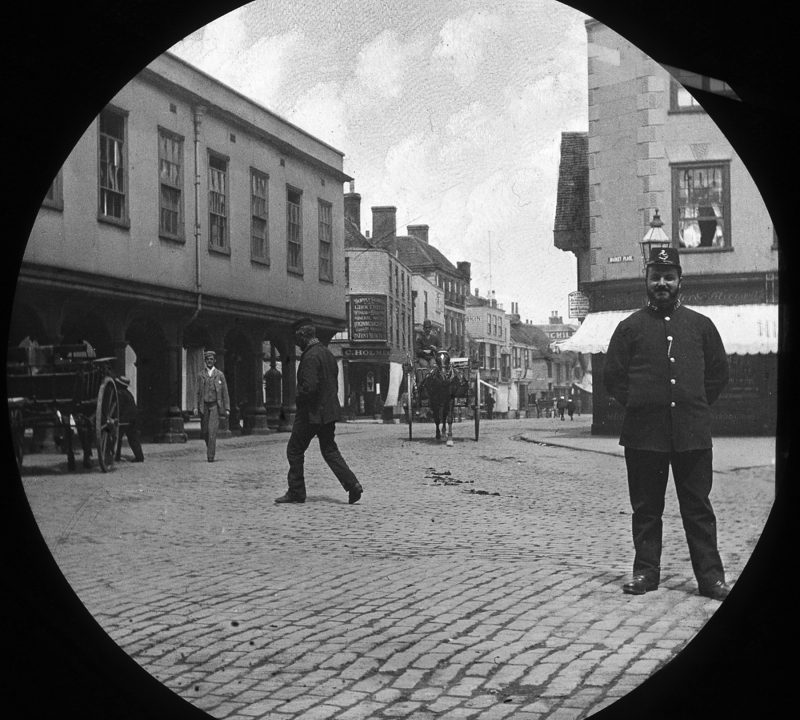
PC Eason of the Faversham Police in the market square before the tall helmets came in (photo: Fleur de Lis Museum Collection)
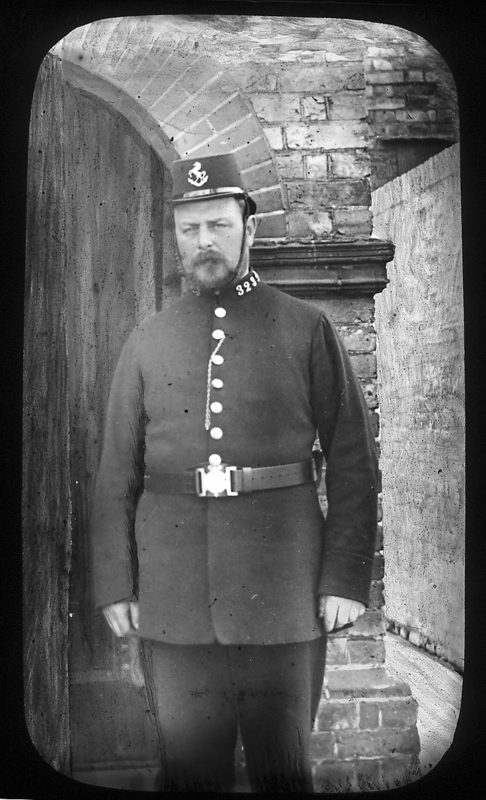
Sergeant Acton of Faversham Police Force (photo: Fleur de Lis Museum Collection)
Faversham didn’t join the Kent Police Force until 1889. Paul says: ‘In those days, crime and law and order was very localised. Once the car came in, it became a completely different kettle of fish.’
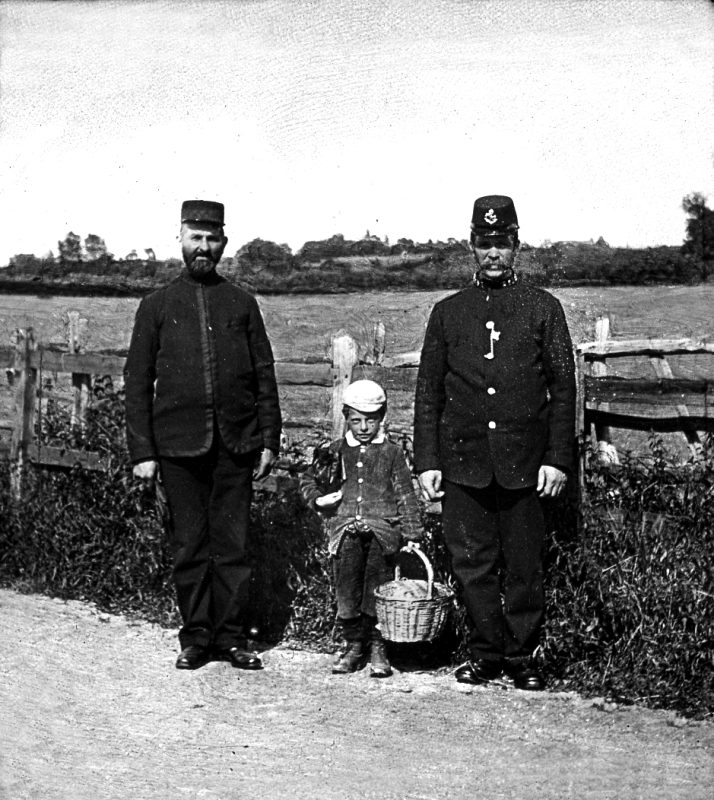
Before cars, law and order was very localised
Paul says the setting up of the Museum is the first stage of a developing conservation and cataloguing strategy, and he is now working on bringing the museum out into the community. He says that, with a proactive beat officer in Herne Bay, they have put together a memory box to take into a dementia care home. Paul says: ‘We’ve assembled various items – a blue lamp, a truncheon, a police whistle and a hazmat suit – to provoke memories, hopefully nothing negative!’
He’s creating a loan box for schools and communities – ‘Particularly for those areas where there isn’t a good relationship with the police. We are aware that of all the emergency services, the police meet with the most hostility and we want to change that.’
Text: Posy Gentles. Photographs: Posy Gentles, Kent Police, the Fleur de Lis Museum Collection